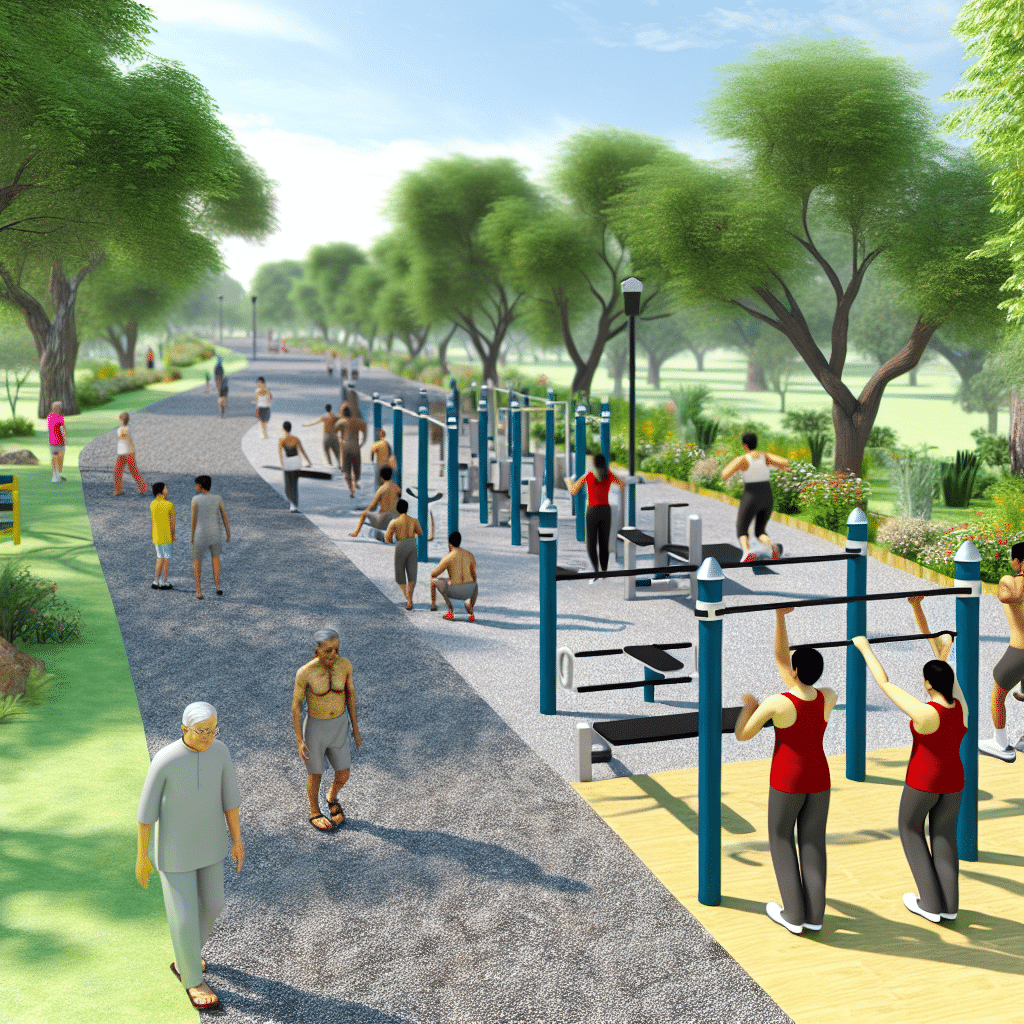A fitness trail is an excellent way to encourage physical activity and bring communities together. These outdoor exercise circuits can be designed to cater to people of all fitness levels, providing a versatile and enjoyable environment for everyone. From planning to execution, this article will guide you on how to build a fitness trail that will become a cherished community asset.
Why Build a Fitness Trail? Understanding the Benefits
Before diving into the logistics, it’s essential to understand why a fitness trail is a valuable addition to any community. Fitness trails offer numerous benefits, including promoting a healthy lifestyle, providing a free and accessible exercise option, and enhancing the beauty of local green spaces. They also serve as a social hub where people can meet and engage in physical activities together, building a stronger sense of community.
Step-by-Step Guide: How to Build a Fitness Trail
1. Planning and Design
The first step in building a fitness trail is thorough planning. This involves selecting a suitable location that is safe, accessible, and has enough space to accommodate the trail and exercise stations. Consideration should be given to the natural terrain and existing pathways.
Engage with local authorities and community members to gather input and obtain the necessary permissions. Designing the trail with a variety of exercise stations will cater to different fitness levels and ensure that the trail is inclusive.
2. Securing Funding and Resources
Once you have a plan in place, the next step is to secure funding. This can be achieved through local government grants, community fundraising events, or sponsorship from local businesses. Partnering with organizations that promote health and wellness can also provide additional resources and support.
3. Building the Trail
With funding secured, it’s time to start construction. Mark out the trail’s path and install signage that provides clear directions and instructions for each exercise station. These stations can include equipment like pull-up bars, balance beams, and step-up platforms. Ensure that each station has clear instructions on how to perform the exercises safely and effectively.
The trail itself should be made of durable materials that can withstand weather conditions and heavy use. Gravel, wood chips, or asphalt are popular choices for trail surfaces.
Ensuring Safety and Inclusivity: Key Considerations
Safety is paramount when building a fitness trail. The trail should be well-lit, especially if it’s intended for use during early morning or evening hours. Regular maintenance is also crucial to keep the trail and equipment in good condition.
Inclusivity is another important consideration. Ensure that the trail is accessible to people with disabilities by including features like ramps and wide pathways. Providing a variety of exercise options, from low-impact to high-intensity, will cater to a broader range of users.
Community Engagement and Promotion
A fitness trail can only be successful if people know about it and use it. Host a launch event to introduce the trail to the community. Offer guided tours and demonstrations of the exercise stations to get people excited and comfortable using the trail.
Promote the fitness trail through local media, social media platforms, and community newsletters. Encouraging local fitness groups and schools to use the trail can also help increase its visibility and usage.
Conclusion: A Lasting Impact
Building a fitness trail is a significant project that requires careful planning, funding, and community engagement. However, the payoff is substantial. A well-designed fitness trail not only promotes physical health but also fosters a sense of community and enhances local green spaces. By following this guide on how to build a fitness trail, you can create a valuable asset that will benefit your community for years to come.




